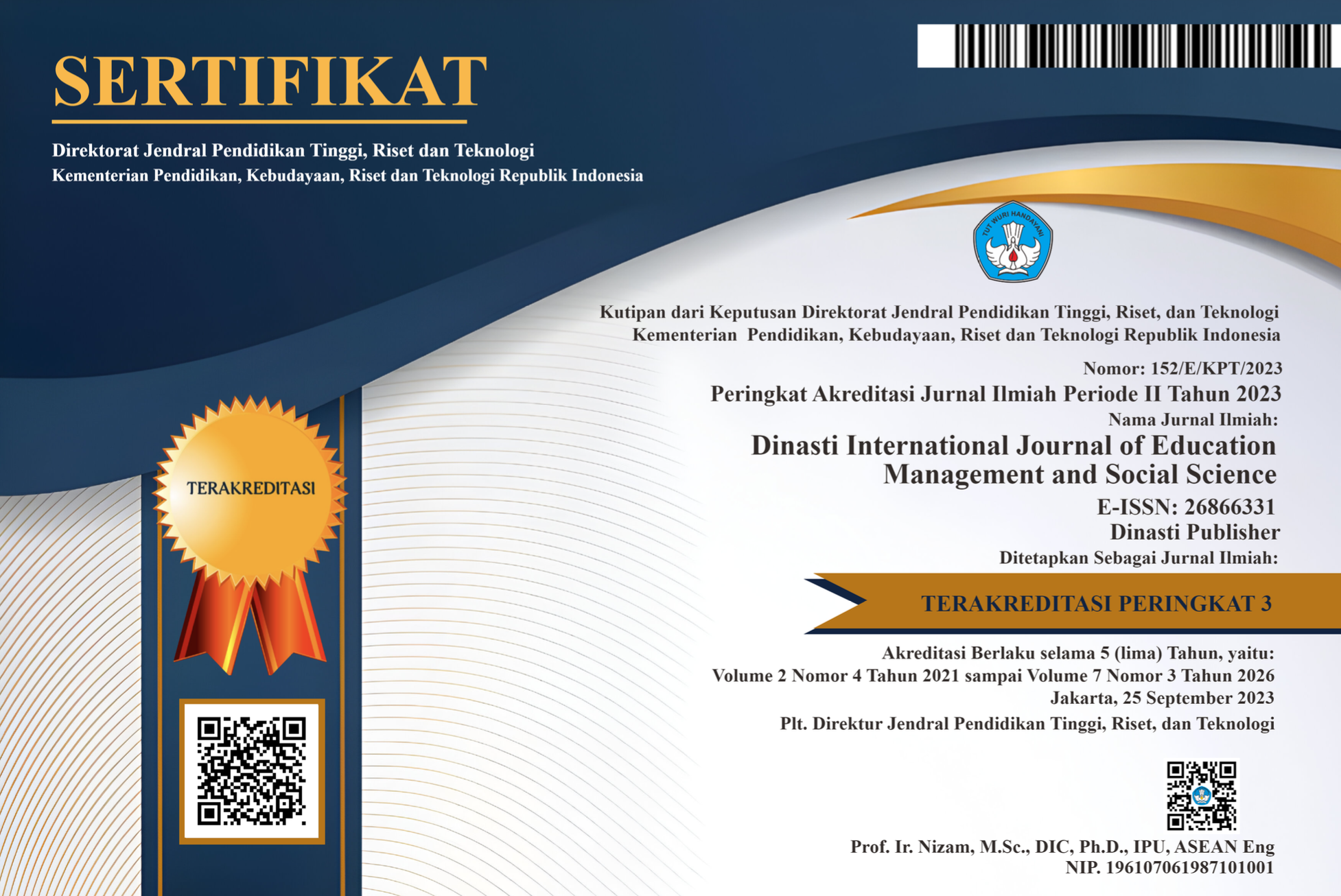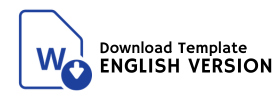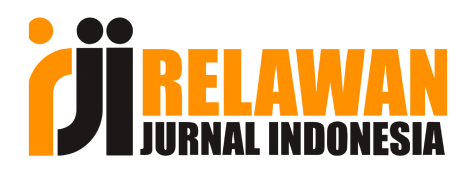Arabic Linguistic and Literary Approaches in Interpreting Educational Verses: A Study of The Tafsirs of Al-Misbah
DOI:
https://doi.org/10.38035/dijemss.v6i5.4618Keywords:
Linguistics, Arabic Literature, Tafsir Al-Misbah, Islamic EducationAbstract
This study analyzes the implications of applying Arabic linguistic and literary principles in interpreting educational verses of Islam as expounded in Tafsir Al-Misbah by M. Quraish Shihab. The primary focus of this research is to examine how nahw, ?arf, and bal?ghah contribute to formulating the substantive meaning of educational verses and strengthening the epistemological construction of Islamic educational values in the Qur'an. Using a qualitative approach with a thematic study design, this research systematically analyzes linguistic aspects of educationally oriented verses in Tafsir Al-Misbah. The findings indicate that the integration of linguistic and literary approaches not only enriches the conceptual understanding of Islamic education in the Qur’an but also reveals the rhetorical, stylistic, and aesthetic dimensions of Qur'anic language, significantly deepening the educational messages. The novelty of this research lies in developing a linguistics-based tafsir paradigm as an innovative approach to Islamic Religious Education (PAI), integrating linguistic analysis with Islamic educational values to establish a more systematic, contextual, and applicable understanding. This approach has the potential to serve as a model for reformulating the PAI curriculum, particularly in Qur'anic-based Arabic language learning, to enhance Islamic literacy, foster critical understanding of educational verses, and internalize moral values in response to the challenges of globalization.
References
Affani, S. (2019). Tafsir Al-Qur’an dalam Sejarah Perkembangannya. Kencana.
Al-Qur’an tentang Ilmu, A., & Al-Qur’an, T. (n.d.). MOTIVASI BELAJAR DALAM AL-QU’RAN.
Arifin, Z. (2020). Karakteristik Tafsir Al-Misbah. Dalam Jurnal Al-Ifkar, 13(01).
Arikunto, S. (2017). Metode Penelitian Kualitatif. Bumi Aksara.
Berutu, A. G. (2019). Tafsir Al-Misbah Muhammad Quraish Shihab.
Bilad, M. N. (2016). Konsep Pendidikan Multikultural dalam perspektif Tafsir Ibnu Katsir dan Tafsir Al-Misbah: Analisis Surat Al-Hujurat Ayat 13. Universitas Islam Negeri Maulana Malik Ibrahim.
Fatoni, F., & Nurhayati, N. (2022). PENGARUH PENGGUNAAN MEDIA GAMBAR TERHADAP HAFALAN MUFRADAT SISWA KELAS V SDI INTEGRAL LUQMAN AL HAKIM 02 BATAM TAHUN AJARAN 2021-2022. JURNAL MUMTAZ, 2(2), 105–112.
Hafizah Rehanun, B. (2017). Tafsir Al-Mishbah, Quraish Shihab 1. 1–19.
Ichwan, M. N. (2017). Metode dan corak tafsir al-Misbah karya Prof. M. Quraish Shihab.
Lubis, M. (2018). Metodologi Penelitian. Deepublish.
Moleong, L. J. (2016). Metodologi penelitian kualitatif (edisi revisi).
Mu’afa, A. (2012). PENDEKATAN LINGUISTIK DALAM PENAFSIRAN AL-QUR’AN. Islamic Review: Jurnal Riset Dan Kajian Keislaman, 1(2), 213–244.
Munir, M. (2018). Studi Komparatif Antara Tafsir Al Misbah Dan Tafsir Al Azhar. MIYAH: Jurnal Studi Islam, 14(01), 15–38.
Nurhayati. (2022). ESENSI DAN SEBAB KESULITAN BERBAHASA ARAB SERTA PENANGANANNYA DALAM DUNIA PENDIDIKAN. JURNAL TA’LIMUNA, 1(1), 84–91.
Nurhayati. (2024). Pengaruh Komunikasi Interpersonal, Budaya Organisasi dan Komitmen Organisasi Guru di Sekolah Dasar Islam terpadu Kepulauan riau. Jurnal Literasiologi, 11(1), 29–49. https://doi.org/10.47783/literasiologi.v11i1.657
Nurhayati, N., Latif, M., & Anwar, K. (2024). The Influence of Organizational Culture, Career Expectations, and Leadership Beliefs On Achievement Motivation In Integrated Islamic Primary Schools Riau Islands …. Dinasti International Journal of …, 5(5), 1150–1168. https://dinastipub.org/DIJEMSS/article/view/2700%0Ahttps://dinastipub.org/DIJEMSS/article/download/2700/1803
Nurhayati, N., & Rosadi, K. I. (2022). DETERMINASI MANAJEMEN PENDIDIKAN ISLAM?: SISTEM PENDIDIKAN , PENGELOLAAN PENDIDIKAN , DAN TENAGA PENDIDIKAN ( LITERATUR MANAJEMEN PENDIDIKAN ISLAM ). 3(1), 451–464.
Rahman, F. (2009). Major Themes of the Qur’an. University of Chicago Press.
Said, H. A. (2014). Tafsir Al-Mishbah in the Frame Work of Indonesian Golden Triangle Tafsirs: A Review on the Correlation Study (Munasabah) of Qur’an. Heritage of Nusantara: International Journal of Religious Literature and Heritage, 3(2), 211–232.
Shihab, M. Q. (n.d.). Tafsir Al Mishbah.
Shihab, M. Q. (2002). Tafsir al-misbah. Jakarta: Lentera Hati, 2, 52–54.
Shihab, M. Q., & Al-Misbah, T. (2002). Pesan, Kesan dan Keserasian Al-Qur’an. Jakarta: Lentera Hati.
Sugiyono. (2015). Metode Penelitian Kuantitatif Kualitatif dan R&D (Cet. 22). Alfabeta.
Suyuti, M. I. A.-T. (1948). Al-Itqan Fi Ulum Al-Qur An.
Wardani. (2020). Tafsir Al-Qur’an dengan pendekatan interdisipliner dan multidisipliner.
Zeko Septian, A., Warsah, I., & Saputra, H. (2021). Makna Lafal Kursi Dalam Al-Qur’an (Studi Komparatif Kitab Tafsir klasik dan kontemporer). IAIN Curup.
Downloads
Published
How to Cite
Issue
Section
License
Copyright (c) 2025 Kafrawi Kafrawi, Zamsiswaya Zamsiswaya, Asmal May

This work is licensed under a Creative Commons Attribution 4.0 International License.
Authors who publish their manuscripts in this journal agree to the following conditions:
- The copyright on each article belongs to the author(s).
- The author acknowledges that the Dinasti International Journal of Education Management and Social Science (DIJEMSS) has the right to be the first to publish with a Creative Commons Attribution 4.0 International license (Attribution 4.0 International (CC BY 4.0).
- Authors can submit articles separately, arrange for the non-exclusive distribution of manuscripts that have been published in this journal into other versions (e.g., sent to the author's institutional repository, publication into books, etc.), by acknowledging that the manuscript has been published for the first time in the Dinasti International Journal of Education Management and Social Science (DIJEMSS).















































